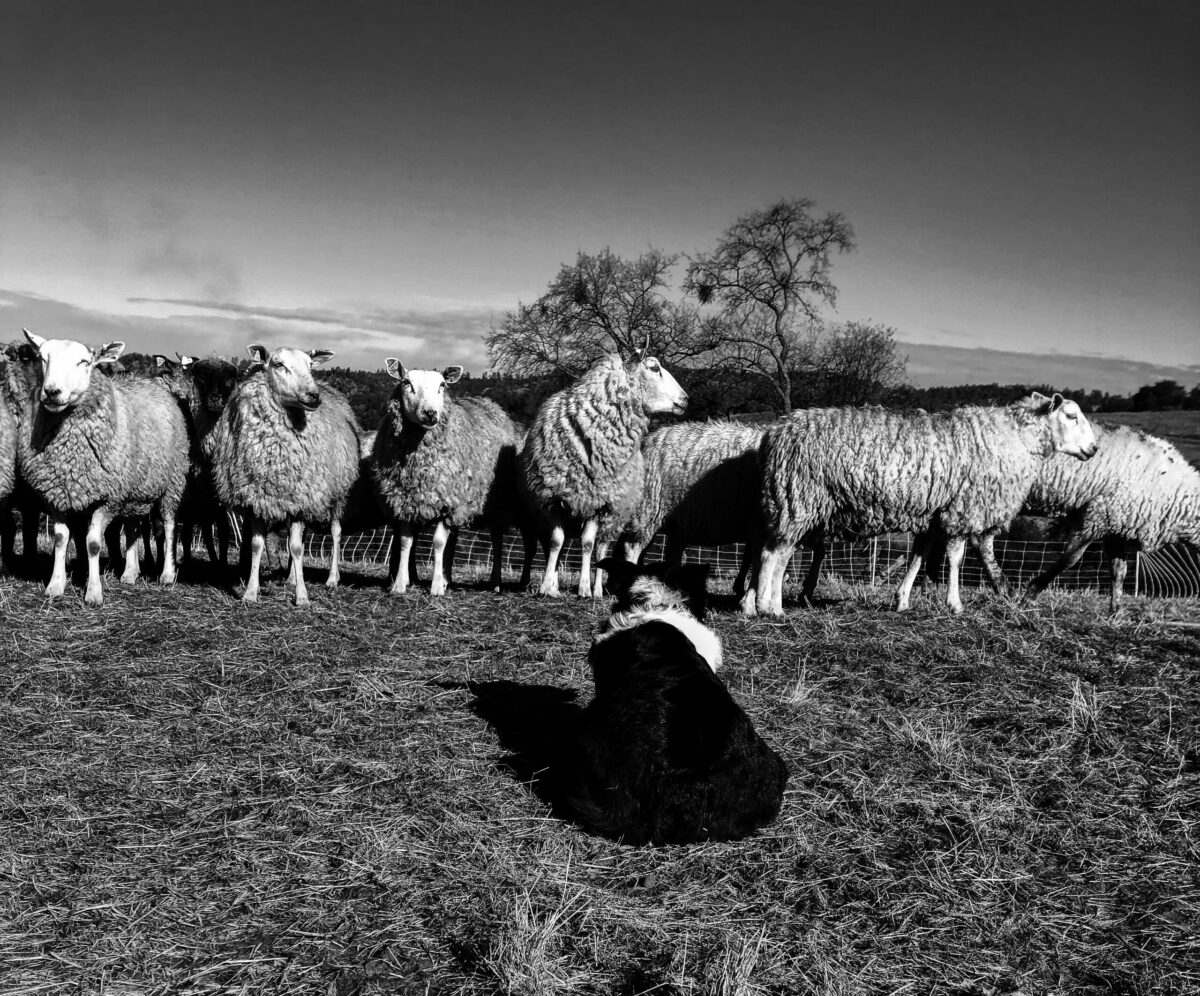Of Rain and Grass and Waiting for Lambs
Contributed by Dan Macon
In mid-January, as we do every year, we brought the ewes into the corrals to give them their pre-lambing vaccinations and check on their health status. Working the ewes is always the last major job before lambing begins. By giving them a vaccine booster five weeks before parturition, we ensure that their lambs will receive antibodies in the milk they produce. Having the entire flock in the corrals also gives us a chance to assess their nutritional status – we want the ewes to be in great shape going into lambing and lactation. We put our hands on every ewe, feeling through the wool to measure the amount of fat cover they’ve put on (fat cover tells us whether they’ve stored up enough energy to nurse their lambs). And if you’ll think back about our weather during the first half of January (or read my previous blogs), you’ll know we were a bit worried about the lack of new grass here in the Sierra foothills when we worked the ewes this year.
Then the spigot opened up! Here in Auburn, since January 24, we’ve measured more than five inches of rain! We’re still below our seasonal average, but the rain that fell in the last 10 days has done wonders for our forage – and for my own mental attitude. When the rain doesn’t come during our rainy season, I worry. As I’ve said before, our experience with drought is immediate – I don’t have time to worry about summer irrigation water when I’m seeing last year’s brown grass and not much else in our sheep pastures in January. I heaved a sigh of relief when I walked outside one evening in the last week and heard the tree frogs singing for the first time in 2021 – they only start to chirp once we’ve had enough rain.

Our basic equation is to combine soil, rainfall, and sunlight to grow grass, which we harvest with our sheep. Grass becomes muscle, fat, bone, and fiber – a renewable source of protein and clothing. A dearth of any one of these ingredients (soil, rainfall, or sunlight) has ripple effects through our operation. Less grass equals more work and fewer lambs, ultimately.
At some point in the last 10 days of February, I’ll arrive at the ranch without receiving a welcome from the livestock guardian dogs – they recognize my truck and usually greet me where I feed them. But when the first lamb arrives, their attitude shifts. They’ll watch over that first lambing ewe to make sure everything is okay – and their absence at their food bowls will tell me I need to find the newest addition(s) to our flock. Lambing comes with its own set of anxieties – will the ewes be good mothers, will the lambs thrive? Will the guardian dogs repel potential predators (which include mountain lions, coyotes, and bobcats)? But now that it’s rained – now that the grass will grow – we have one less thing to worry about! Now we’ll just wait for new life!
